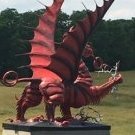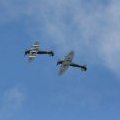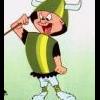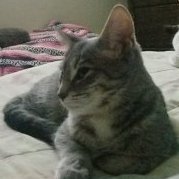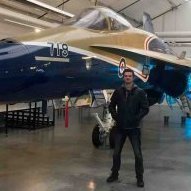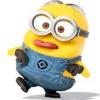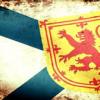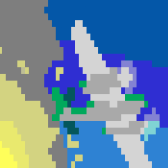Search the Community
Showing results for tags 'RCAF'.
-
Here are some images for the kit and scheme I’ll be building. This will straight from the box and I’ll be finishing it in the markings of 443 Squadron RCAF. This is the machine on the box art and I’m looking forwards to getting started Steve
- 60 replies
-
- 10
-

-
Hi, The Stranraer (original Matchbox production) was a kit waiting for many years in my stash. It is about 30 years now. The main reason was the complicate riging and some conversion needed to do as the kit is reproducing some post war changes. I decided to do her in RCAF livery (and machine of Canadian build), and I am very grateful to all BM fellows who took part in a topic providing many useful information on those differences. First of all I thanks Chris ( @dogsbody ). This thread is here: So, the list of modificarions are: 1. removing of carago doors on right side and add additional window 2. cut out the place for cockpit window to move back on right side 3. 4 blades props 4. The a bit reshaped cowlings 5. Fairing of the rear gunner position 6. Browning MGs, and doubled in mid upper site. 7. DF loop control rod between wings 8. Bombs bays for 20 lb bombs and bombs racks under the wings More corrections are landing and positioning lights, pitot tube, some rivets on surface (very delicate, almost invisible, unfortunately) and bombs (20 lb stolen from Airfix Swordfish, bomb chargies scratch bulid) and driving mechanism of ailerons on the bottom side of wings. I done riging by EZ. The scheme presents machine from 117 Squadron (BR) RCAF. The story of this particular machine is described here http://www.rwrwalker.ca/RCAF_901_950_detailed.htm as "With No. 117 (BR) Squadron, RCAF Stations Sydney, Dartmouth, Bella Bella, BC, and Jericho Beach, BC August 1941 to March 1944, in camouflage, last date: 8 March 1944 - Struck off". Here she is: An undersides (sorry for wide angle distortion) Comments welcome Regards J-W
-
Just finished this line of aircrafts, all build out of box. From the new Airfix line and a joy to build fit is exelent. Decals fra Aviaeology, super decals, with all the reference material that you can dream for. Cheers Jes
-
Here's my Airfix 1/48 Spitfire FR XIVe, completed as a 402 Squadron (RCAF) machine, March, 1945. As I understand it, 402 was one of two Squadron's to operate the "bubbletop" before the end of the war in Europe. I found the Airfix kit to be good, but required careful assembly and a fair amount of shimming. The paints I used are Tamiya acrylic, weathering with Humbrol enamels and pastels, and the decals are a mix of XtraDecal codes, Aviaeology serials, and Barracuda stencils. I'm quite happy with the result, and I hope you like, Colin Link to my accompanying "Highback" build - https://www.britmodeller.com/forums/index.php?/topic/235064455-148-spitfire-f-xive-highback-402-squadron-rcaf-march-1945/
- 17 replies
-
- 59
-

-

-
Here's my 1/48 Spitfire Mk XIVe highback completed as 'Blackie' MacConnell's mount at the end of the war. I believe he was flying this aircraft when he downed an Arado AR-234 in April, 1945. It started life as an Airfix PR XIX, and was modified extensively to become a Mk XIVe. Decals are from XtraDecal, and Aviaeology stencils. Paints are Tamiya acrylic's, with weathering using Humbrol enamels and pastel chalk. Hope you like, Colin Build log -
- 27 replies
-
- 60
-

-

-
Hi all My entry will be a Eduard Spitfire MK.XIe in 1:48 (84138) with a few after market items ie cockpit Wheels cannons engine ? decals I will be using Xtradecal set X48172 Using markings for MK304 Y2K Flown by Flight Lieutenant Arnold “Rosy” Roseland of 442 (RCAF) Squadron based at St. Croix Sur Mer France July 1944
-
Here's my 1/72 Italeri/Wingman C-130J-30 Stretched Hercules operated by the RCAF. It started out as a Testors/Italeri AC-130a 'Spooky' with a lot of scratchbuilding and modifications. I'm very happy with how it turned out, hope you like ... Thanks for looking, Colin
- 31 replies
-
- 79
-

-

-
I've built a small squadron of the of the old Minicraft DC-3's over the years, but this was my first of the newer Roden offering. I must say, it's a lovely kit, correcting several of the former kit's more notable weaknesses, such as the short fin/rudder height and the engine spacing. Mods for the RCAF version were minimal, chiefly cutting off the tail cone of the civil version (which Roden left on this C-47 issue) and slight alterations to the antenna layout. Paints were Tamiya acrylics on the 'topside' and MM grey acrylic primer on the undersides. I used a little thinned enamel wash to take the 'toy' sheen off the NM paint job and to give it a bit of a 'lived in' look, but kept weathering to a minimum: from the photographs available, it looks like the proud crews kept these birds pretty 'tidy' throughout their service lives. This was also my first go at the lovely decals from Leading Edge, who specialize in Canadian subjects. The decals themselves were nearly ten years old (though very carefully stored), but other than being a little 'stiff' here and there, performed beautifully. No signs of cracking or splitting, nice deep color, and they settled down well with minimal setting solution needed. A quick and most enjoyable build.
- 15 replies
-
- 35
-

-
Hi, Recently finished my RCAF Canadair Sabre from 427 Sqdn. I used the Academy F-86F-30 kit OOB except for the Aires seat and True Details wheels. The Leading Edge decals turns it into a Hard Wing F-86-30 style from Zweibrücken, Germany in 1957. The tail markings is from the Weapons Meet Cazaux, France. Unfortunately the decals had a tendency of silvering. Painted with Mr.Paint and weathered with Ammo of Mig products. Thanks for looking 🙂 //Fred
- 11 replies
-
- 37
-

-
With your indulgence...another 'golden oldie' dredged up from old Photobucket files. This is the simplified 'easy build' Hobby Boss F/A-18A Hornet, from the 'Blue Angels' boxing...dressed up with the excellent Leading Edge Canadian Hornet 2006 Demo markings. I spruced-up the very basic kit with added LEX fences on the wing roots, and a tail hook and assorted sensors and antennae from rod & strip stock. As a Canadian bird of that era, it also needed the characteristic nose-mounted searchlight, so I drilled a shallow hole and added a disc from clear acetate. The featureless interior tub needed the most help. I reduced a color internet photo of a Hornet instrument panel to size, printed several copies and used them as “layers” to make a semi-relief panel, attaching it in place with craft glue. Bits of styrene worked for seat features, and painted tissue for harnesses and chute pack. Another bit of clear acetate made up the the HUD. The kit came with three drop tanks and pylons...as well as some additional weapons pylons and racks...but no ordnance whatsoever. Since in my mind a Hornet looks 'nekkid' without something on the wingtip rails, I snagged a pair of Sidewinders from an old Testors F-5E, and painted them as inert practice rounds. A nice bit of color for ordinarily-drab grey birds.
-

A rather attractive Ventura - Now finished
bigbadbadge posted a topic in Work in Progress - Aircraft
Hi all As well as the Oxford I have been working on a couple of other aircraft a 72nd scale Novo Percival proctor and this, the academy Lockheed Ventura II. Although I have decided to model a RCAF Western Air Command machine during Operation polar Bear in 1944/45. They were standard Venturas in the US Navy scheme and some were repainted in a scheme known as the Saddleback scheme with some yellow panels on the tail plane vertical surfaces and the tops of the outer main wings. The scheme looks particularly attractive I think. The model I am making s of a GR.V serial 2189 with code letter Q of 8 Sqn Feb to March 1945. This aircraft is called "Pats Pile". The kit is quite basic and although I am not correcting the cockpit on this I did make alterations to the pilots seat as shown in the first image. The fuselage went together quite well with minimal filler, however when it came to the canopy it was around a millimetre to shallow this was rectified by sanding off the lower frame work and adding some square rod to the fuselage sides in the cockpit opening and on the bottom of the windscreen which matched very well. The nose went on well and the small side windows were filled as this is a later type. The front plexiglass has also been painted over, as on the real machines, this was covered in fabric strips applied with a solvent adhesive and then clear doped over which is a light fibreglass colour. This was due to the cold temperatures and the action of the Guns firing just above the plexiglass could shatter. The wings went together well and the vents in the lower engine nacelles were boxed in and engines inserted. Wing to fuselage joint required filler all round. This is where I am at the mo with the white undersides painted on almost, just need one more coat to go. The upper surfaces will be Extra Dark Sea Grey and Dark Slate Grey. I am using Aviaeology decals Venturas in Canada part 3 sheet AOD72034. Hope you enjoy Thank you for looking Chris- 32 replies
-
- 15
-

-
- 1/72
- Saddleback
-
(and 1 more)
Tagged with:
-
I hope someone here can help me with this. I am sure that at one time, someone (Leading Edge, Arrow Graphics, ???) offered a 1/72 decal sheet of Post War - 1950s black code letters. I have a few sheets of numbers, but can not locate a corresponding sheet of letters. Does anyone know who or if such a decal sheet ever existed? and, if so, who made? Thanks!
-
Hi folks. This is my interpretation of my recently completed Canadair Sabre Mk.2 in 1/72 Not much to say really. Life started by using the Hobbycraft kit that had its wings backdated to pre 6-3, wing pylons moved inboard and the gun-sight replaced with an older type. Model finished using Humbrol Metalcote 'Polished Aluminium' paint, Model Alliance decals, MA-72120. Markings for aircraft '19241' of 421 Squadron, 2 Wing, RCAF, Grostenquin, France, 1954. Stuart
- 11 replies
-
- 24
-

-
Good morning (or afternoon depending on what side of the Atlantic you're on) everyone, This will be my first model, along with my first thread on model making online! There will be many questions, and possibly something worthwhile looking at in the end. I have chosen to make a model based off of my nation's primary multirole fighter. I recently purchased a Canucks Models CF-188 special edition with the Battle of Britain decals. Plans are to order Canada's FIB Decal kit from Canuck models and base the model off of a CF-188 that participated in Operation Mobile. As for workspace, this is how I have been working, soon to change however as I am heading back to school today As for actual progress, I have assembled the seat, and have painted most of the cockpit black for further detailing I have found I love the assembly of parts, the painting on the other hand I am very unhappy with. I feel that the paint has gone on too thick, and that there is texture from the paint that makes it look messy. I am considering finding a way to strip the paint off the parts (they are only dry assembled aside from the seat) and having another go. I need to decide if I am going to go ahead and get an airbrush when I get my next paycheck, I have a feeling I won't ever be happy with brush painted models. Plenty to think about on the drive today! Comments and criticism are encouraged!
-
Time to throw my hat into the ring and actually make a decision as to what to build! I am going to build a Hasegawa F-104G as a CF-104 of the 1st Canadian Air Group which was based at Baden Sollingen in Germany. The aircraft I will be building is 104806 as it was painted during the NATO Tactical Air Meet at Ramstein from 20th June until 3rd July 1980, during this exercise the aircraft had a large letter C painted on the tail, and even more interesting colour wise the aircraft had a replacement starboard wing which was painted in a different camo scheme from the rest of the airframe (overall green as opposed to the dark green/grey over medium grey of the rest of the airframe). I will be using decals from Leading Edge 48-20 which has the markings I need for this aircraft and has resin parts for the RWR's carried by the Canadian CF-104's during this time. I shall post some pics of the kit and any goodies I decide to use soon. I won't be starting this kit for at least a couple of weeks until I can clear other builds off my bench so I thank you in advance for your patience and interest. Craig.
-
Hey all I happened across a rather striking paint scheme on a CH-124 Sea King.... This dates from 1999 when the RCAF was celebrating its 75th Anniversary. This seems to be the only picture available of this particular Sea King. Does anyone know if there's ever been a decal sheet for these markings? Likewise, does anyone know of any other pictures? Regards ANS
-
This is likely my first or second post here on Britmodeller, and it concerns an F-5 model that is already being built by a number of fine hobbyist's in this campaign. None-the-less, this is the most peaceful, relaxing, and enjoyable hobby I can think of, and I don't feel the duplication should bother anyone. I'm doing mine in the CAF lizard scheme as shown on the boxtop. I have a reference with a pair of decent color photos of that exact aircraft. So mine will be built OOB using the kit decals. Here the prerequsite photos: I'm starting the model this evening, so progress photos should be forthcoming soon. I've been lurking for quite awhile, admiring the outstanding modelling skills of those who frequent this forum. I certainly hope I can hold my ground in the face of the skilled workmanship I see throughout this forum. Glad to be here. Guy
-
Hey All Today I present to you a CH-118 Iroquois of 439 "Sabre-Tooth Tiger" Squadron. This particular scheme dates from 1994 when 439 Sqn were celebrating their 70th Anniversary. Enjoy... Firstly, the real aircraft... CH-118, No.118106 . . . . . . The Italeri Huey is actually a very nice kit; plenty of options and detail and a reasonable parts fit... that is until you get to the clear parts. The fit (or lack thereof) of the clear parts is just plain awful. Every window with the exception of the ones above the cockpit was too small for the opening it was supposed to go into. I'm talking at least 0.5mm all the way around. The side windows were replaced with clear acetate glued to the inside. The intent was to glue the kit windows to the acetate but after trying (and failing) on the small side windows, I elected to leave it as it was. If it were up to me, I would have the doors in the kit molded in clear. Like I said the rest of the kit is very well done, with lots of interior detail and different configurations of equipment and seating for whichever version you prefer. This Huey was painted with Pollyscale Reefer Yellow for no particular reason other than it was the closest bottle of yellow at the time. Vallejo Black mixed with a little flow improver was used to do the tiger stripes... that's right ladies and gentlemen, those stripes aren't decals they were painted by hand! The (anti-slip?) area on the top is Tamiya Medium Grey. The windows above the cockpit were tinted green with some Future mixed with green food colouring. The exhaust pipe was removed during assembly and replace with some aluminum tubing after painting was completed. Numbers, roundels and such came from Belchers Bits "Canadian Helicopters" decal sheet. The only aftermarket besides the decals was a set of Eduard Superfabric seatbelts. The inspiration for this build came from last month's issue of Scale Aviation Modeler Intl. which featured an incredible 1/35 Huey build (which I believe is here on Britmodeller somewhere). In the accompanying colour profiles was this striking scheme. It had to be done! I didn't bother to source decals, so I just dove in, took my time, and to be honest, I wasn't as hard as I expected. It was actually quite of relaxing. All in all, not bad for my first helicopter if I do say so myself. Regards
- 12 replies
-
- 16
-

-
Hey all When Avro Canada were conducting flight trials of the CF-105 Arrow they were supplied with an RCAF F-86 Sabre and a CF-100 Canuck as camera chase planes. The following picture would have been taken from the CF-100 and clearly shows the Sabre. Unfortunately the rear of the aircraft is not visible in the picture. Does anyone know the identity of this Sabre? Serial Number? Squadron? Anything would be of help, as I would very much like to model this particular aircraft. Regards
- 16 replies
-
- avro arrow
- rcaf
-
(and 2 more)
Tagged with:
-
Hey All Keeping with the theme from by CF-14 Tomcat, I present the Revell 1/72 F/A-18F finished as a what-could-be CF-18 Super Hornet Here in Canada there has been a lot of controversy with regards to replacing our thirty plus year old fleet of F/A-18 "Legacy" Hornets. A similar problem faced by many other air forces around the world. With blatant disregard for established procedure, the Government and the Department of Defence announced that Canada would be acquiring the F-35 Joint Strike Fighter to replace the Hornets. This was done without tendering a formal competition, i.e, without doing a little browsing first, they just decided to buy the first thing they saw. In their infinite wisdom, they have since gone back on the decision. For more information I will direct you to check out "Gripen 4 Canada" or "Best Fighter for Canada" http://gripen4canada.blogspot.ca/ bestfighter4canada.blogspot.ca Personally, I am in favour of either the Saab Gripen or the Super Hornet. The F-35 is proof of concept of the old saying "Jack of all trades, Master of none" Anyway... on with the model . . . . . What can I say, the Revell /72 Super Hornet is a fantastic little gem. The fit is superb, the panel lines may be a little heavy for some, but I found them just right. The cockpit is a little sparse on detail with most coming from decals, however this didn't bother me as I shut the lid on all my canopies anyway. The only aftermarket additions were a set of True Details resin seats and of course the decals once again being the wonderful Canuck Models product. The weapons are a mixed bag of those from the kit, some from a Hasegawa weapons set, and an Academy F-18. The model was painted with Vallejo Light Ghost Grey Primer as a general primer and as the lighter camouflage colour; the darker colour being Model Master Medium Grey. This particular aircraft is finished with the markings of 433 "Porcupine" Squadron in honour of their recent reactivation. For those of you wondering, I did the twin seater because I've always found that the twin seat cockpit and canopy fill out the long nose of the Hornet and looks more balanced than the single seaters. However, I may yet do one, only time will tell. Thanks for looking Regards, ANS
- 10 replies
-
- 13
-

-
Hey All So *Spoiler Alert* I'm throwing together a what-if RCAF Mirage 2000, however, I can't rightly decide on what camouflage scheme to use. Seeing as how it was in competition against the F-18, using the CF-18 style low-viz camouflage would make sense, however, every real Mirage in the world has some sort of two/three tone scheme which makes me think that the CF-5 or CF-104 camouflage would look good. Any ideas? Regards ANS
- 11 replies
-
My next entry in this group build is the MiniWing McDonnell CF-101 Voodoo, which actually is a re-release of an old FE-Resin kit. As usual, the kit comes in a cheap cardboard board with the only use of WordArt I've seen outside tacky flyers and parish newsletters: The fuselage is cast as a hefty single piece, though a piece of the tail was missing in the box (probably something wrong with the casting). The nose is a sepearate piece, probably because Miniwing also released an RF-101 with a different nose. The wings, nose and exhausts come on fairly inconvenient casting blocks, and it will be tricky to remove them cleanly. I will probably saw off a part of the casting block and file it off. Two vacuform canopies are provided, and I will need to break out a new scalpel blade for this. By the way, the tail's not warped as it seems in this picture, the fuselage isn't sitting perfectly flat. Strangely enough, only one seat is provided, and some pieces don't seem to have a place to be glued on to, like the two L-shaped blocks next to the part with the ventral strakes (just above the fuselage). Unless they're supposed to be seats. Instructions are a simple exploded view copyrighted to Erik Faustus, showing the kit's lineage. Confusingly, they indicate the jet intakes as separate parts but these weren't separate parts for neither the FE Resin nor this kit The kit offers two markings: a CF-101 from 409 Squadron and an all-black one (my choice) from 414 Squadron. The latter doesn't seem to be the EF-101 as the provided serial number is different from the EF-101's, and it's lacking an underfuselage pod and some bumps under the nose. I expect the decals, which are ALPS, to be awful, based on past experiences with decals from the same printer. Later Miniwing kits have their decals designed by JBr Decals. At the moment I'm trying to get off the wings, exhausts and nose from their casting blocks with a minimum of fuss while keeping their bases nice and flat. Hopefully it should be one of these 'goes-together-quickly-after-cleanup' kits.
-
Good Day All, i'm calling this "done" Started this project back in March and took my time at it but now she's finally complete. The DH.82c Tiger as she may have appeared in 1942 after rolling off the production line at DeHavilland Canada in Downsview (now part of Toronto) Ontario, Canada. She stayed in Canada her whole life (including some 25 years in storage) and is currently flying with/at The Canadian Warplane Heritage Museum in Hamilton, Ontario Canada. Here's what was done to get it as close as I could to a DH.82c: Canopy (vac formed), prop (metal), and engine (metal) are via John at Aeroclub (THANKS JOHN !!) - the Gipsy Major is quite nice on its own and I just added a few small wires/tube items to make it look a bit more "busy". Scratchbuilt the engine mount and supports using lead foil and thin wall micro brass tubing from Albion Alloys Scratchbuilt exhaust shroud.. again more micro brass tubing. Scratchbuilt elevator trim tabs from brass sheet Scratchbuilt replacement interplane struts also using the Albion Alloy stuff Scratchbuilt replacement landing gear struts (brass tube again) and moved the struts forward as per DH.82c Added plastic strip "canopy rails" Decals were a mix of Xtradecal roundels and ModelDecal numbers Paints were Xtracrylix Trainer Yellow and a mixture of Tamiya "blacks" (mostly used Nato Black). WIP build thread is located here: http://www.britmodeller.com/forums/index.php?/topic/234978628-first-wip-build-172-canadian-dehavilland-dh82c-from-airfixs-dh82a/ Overall, I'm happy with the result and time put in.... and I think, just my opinion mind you, it's a bit nicer than the Pavla kit Cheers, Dave P.S. Haven't decided if I'll leave the Airfix Airborne jeep there or not.. may move it and put a pilot there instead http://www.chang-sang.com/photo/models/TigerMothBuild/DSC03492.jpg http://www.chang-sang.com/photo/models/TigerMothBuild/DSC03494.jpg http://www.chang-sang.com/photo/models/TigerMothBuild/DSC03496.jpg http://www.chang-sang.com/photo/models/TigerMothBuild/DSC03497.jpg http://www.chang-sang.com/photo/models/TigerMothBuild/DSC03498.jpg http://www.chang-sang.com/photo/models/TigerMothBuild/DSC03499.jpg http://www.chang-sang.com/photo/models/TigerMothBuild/DSC03500.jpg http://www.chang-sang.com/photo/models/TigerMothBuild/DSC03501.jpg http://www.chang-sang.com/photo/models/TigerMothBuild/DSC03502.jpg http://www.chang-sang.com/photo/models/TigerMothBuild/DSC03504.jpg
- 20 replies
-
- 31
-

-
- Tiger Moth
- 1/72
-
(and 1 more)
Tagged with:
-
Hey All Today I present Academy's 1/72 F-14A Tomcat finished as a what-if CF-14 of the Canadian Armed Forces. In the late 1970s the Department of Defence was looking for a replacement for the CF-101 Voodoos and CF-104 Starfighters that were starting to show their age. The aircraft that made the short list were the Panavia Tornado, F-16 Fighting Falcon, F-15 Eagle, Mirage 2000, F/A-18 Hornet, and F-14 Tomcat. The list was eventually whittled down and the F/A-18 Hornet was chosen as the winner of the New Fighter Aircraft competition. Over 30 years later the Hornets are still going strong, but like the Voodoos before them, they too are soon do for replacement (a highly controversial and much debated topic). The F-14 was struck from the list as it was deemed too expensive in the numbers required; a conclusion the US Navy had already come to. According to some internet sources, Canada had offered to purchase the Iranian Air Force's fleet of F-14As for a bargain-basement price after the post-revolution US arms embargo had left them grounded. Due to political reasons the offer was declined. Whether this is true or simply hearsay, I don't know, but what I do know is that it makes for good modelling inspiration. I give you Tomcat "123" of 441 Squadron, Canadian Forces Air Command (Didn't have enough zeroes to do "100" ) The Academy F-14 is a pretty nice kit. The build is relatively straight-forward with the only problems being at the nose to rear fuselage join. Panel lines are sharp and deep enough to hold a wash well, except around the nose where they are a little soft. The cockpit is not the most detailed but with the addition of some True Details seats looks presentable under the canopy. With careful gluing the wings are still functional after assembly, but will scrape the paint off the wing surfaces, so are best glued in your favourite position. The AIM-54s are from the kit, with the Sparrows and Sidewinders coming from a Hasegawa weapons set. If I were to do this again, I would probably replace the forward AIM-54s with Sparrows so as not to hide the False Canopy. The model was painted with Model Master Light Ghost Grey and Medium Grey, these being the closest matches to the colours used in the CF-18's camouflage, with Gunship Grey used for the "False Canopy". Exhausts were done in Humbrol Metalcote Gunmetal, with a gentle spray of MM Jet Exhaust on the inside. Decals were from the excellent Canuck Model Products sheet "CF-18 Hornet - Symmetrical Scheme" to depict the aircraft as it would (may) have appeared in the early 1980s. Seriously, these are hands down the BEST decals I have ever used. Thanks for looking and keep on whiffing! Regards, ANS
- 10 replies
-
- 13
-

-
Hey all Carrying on the theme of my last post, I present another 1/48 Tamiya Mustang. This time, a P-51D from 402 "City of Winnipeg" Squadron. Like my Mk.III Mustang, this one was completed out of box with only the addition of Hussar wheels and an Ultracast seat. I cannot recommend Ultracast products enough, well cast, well detailed, well priced. and made in Canada. She was painted with Tamiya Titanium Silver as I find this a good representation of the Aluminium Lacquer finish RCAF Mustangs wore later in their service life. Decals came from Leading Edge Models' "RCAF P-51D Part 2: Eastern & MB" decal sheet, this includes enough markings and stencils for FOUR complete airframes! If you have plans to make an RCAF Mustang, Leading Edge is as far as I know, the only game in town. These aircraft were well maintained, so I restricted weathering to a simple panel wash with MIG Neutral Wash. This is a nice medium grey-ish colour which works well on very light and relatively dark colours. Enjoy... In the immediate post-war period the RCAF acquired 100 P-51Ds from American stocks to equip two regular and ten auxiliary squadrons. The Mustangs in regular squadron service were replaced by Vampires and Sabres in 1949-50, but the auxiliary squadrons soldiered on until 1956 when they too were replaced. Most of the airframes were sold on the civilian market, which means that your favourite air show war bird might very well be an ex-RCAF aircraft. The RCAF Mustangs were virtually identical to the rest of the herd. The only noticeable difference besides the direction finder transponder (the black thing on the rear fuselage), was in the cockpit. Canadian Mustangs were modified with a gun selector switch which allowed the selection of either two, four or six guns for firing. This was, I believe, mostly for ammunition conservation when conducting gunnery training. They could also be fitted with bomb racks on the wing hardpoints which could carry six or eight concrete practice bombs. For the history of this particular aircraft, I'll paraphrase the decal instructions: "9258" P-51D-30-NA USAF 44-74865 Feb.1951 received at RCAF Station Uplands from Texas Engineering Co. Dec.1951-Nov.1952 posted to Training Command at RCAF Trenton Nov. 1952 Sent to MacDonald Bros. for modification and overhaul Served in 402 City of Winnipeg Sqn. from Nov. 1953 until Sept. 1956 when placed in storage. Sold at auction in May 1959 This particular aircraft now flies with the civilian registration N8677E as "Sweet Mary Lou" of the 357th FG Thanks for looking and for the feedback on my previous build. Regards ANS

